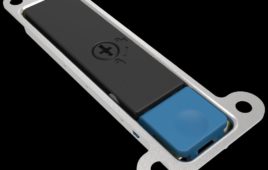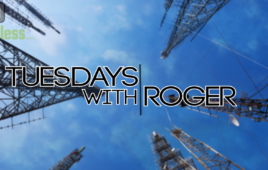Bidding in the FCC’s forward spectrum auction kicked off Tuesday, marking the start of what is expected to be a several months-long process.
The proceedings began Tuesday at 10 a.m. with one six-hour bidding round, and will continue in subsequent days with two two-hour bidding rounds at 10 a.m. and 2 p.m.
Unlike the reverse auction, which was limited to 52 rounds of bidding, the FCC said the forward auction can continue indefinitely as long as demand outpaces supply.
The FCC previously said 62 bidders have lined up to take part, including U.S. wireless giants Verizon, AT&T, T-Mobile and U.S. Cellular as well as Comcast and Dish Network. Sprint is the only carrier out of the major four that is not participating.
Twenty of the final bidders have qualified for small business bidding credits and 28 bidders have qualified for rural service provider bidding credits.
Read More: Incentive Auction 101: A Spectrum Stampede Survivor’s Guide
Thanks to the 126 MHz clearing target set by the FCC in April, participants in the forward auction are bidding on 100 MHz – or 10 paired blocks – of spectrum in 91 percent of markets nationwide. At least eight blocks of spectrum are being offered in 97 percent of the markets across the country, the FCC said. The FCC said a total of 4048 licenses will be up for grabs during the proceedings, with 99 percent of those offered without any impairments.
The FCC’s selection of the maximum band plan means the maximum amount of reserve spectrum available in any market will be 30 MHz, or three paired blocks, the FCC has said. In accordance with auction rules, though, officials said the actual amount of reserve spectrum available will be a function of whether reserve-eligible bidders have actually bid on the spectrum in a given market. If no bids are placed for the spectrum reserve, it will become non-reserve spectrum.
Forward auction bidders are up against a towering $86.4 billion price clearing target set by broadcasters to end the auction. But analysts have expressed doubts the forward auction tally will hit that mark.
Even before the $86.4 billion figure was released by the FCC, a Bloomberg survey of eight analysts in January showed bids might total just $33 billion. Those analysts put AT&T at the top of the big spenders, with an estimated $10.6 billion, followed by T-Mobile with $8 billion, Verizon at $6.2 billion and Dish at $4.7 billion.
Upon release of the price target in June, analysts including Recon Analytics Roger Entner, BTIG’s Walter Piecyk and PwC Strategy &’s Dan Hays warned the auction may “take a while” since a second round of the reverse auction would likely be necessary to lower the price target.
Should the need arise, FCC Chairman Tom Wheeler told the House subcommittee on Communications and Technology in July the commission is “fully prepared” to implement additional stages of the auction.
Some wireless groups, however, have expressed concerns that a lengthy auction will conflict with major industry events and impair the ability of smaller bidders to adequately participate in the auction. The Rural Wireless Association (RWA) and the Rural Broadband Association (NTCA) last week asked the FCC to press pause on its incentive auction for several days in September during CTIA’s annual Super Mobility conference as well as during the NTCA’s Fall Conference and RWA’s Annual Meeting.
Filed Under: Telecommunications (spectrums)




